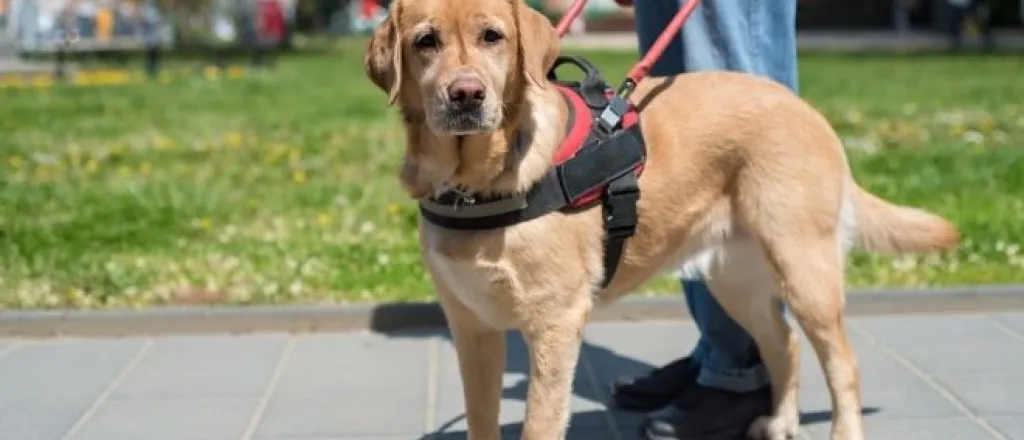
Ways service dogs help people with disabilities
Service dogs help people with disabilities live full lives within their communities. While guide dogs might be the type of service dog most people are familiar with, there are so many other ways service dogs help people with disabilities. They can help alert people to sounds, detect seizures, and help with everyday tasks.
Learn all the ways service animals help to keep us safe and healthy.
Assist with everyday activities
Assistance dogs can help people with disabilities live independently, giving them autonomy they wouldn’t otherwise have. These dogs open doors, pick up items, alert their owner to sounds if they’re hard of hearing, or even pull a wheelchair. Assistance dogs know how to complete dozens of tasks to help their owners.
Alert their owner to impending health situations
There are also medical alert dogs that can sense medical conditions and alert their owners to dangerous issues, such as falling blood sugar, impending seizures, or extreme drops or elevations in blood pressure. They go through two years of training to develop this talent.
Assist people with hearing loss
There are guide dogs for people who are visually impaired, but there’re also dogs to help people with their hearing loss. These dogs learn to identify different everyday sounds, like smoke detectors, doorbells, and alarm clocks. They’ll signal to their owners through physical touch that something needs their attention, or they can also lead them to the sound.
Guide people who are blind
Guide dogs undergo rigorous training to keep up with the demanding job of helping their owner with their vision loss. Only the most intelligent dogs complete training to become guide dogs because they need to be able to concentrate completely and ignore all distractions, such as food and other animals.
Help comfort people
Therapy dogs help to comfort people, but they aren’t service animals. They help people with PTSD, anxiety, depression, autism, and other diagnoses to manage their mental and emotional well-being. Volunteers can also bring in their dogs to settings like hospitals and nursing homes. While they provide a much-needed service, therapy dogs don’t have the same access that service dogs do.
With the many ways service dogs help people with disabilities live fuller and more independent lives, the world can be a much more manageable place.

















